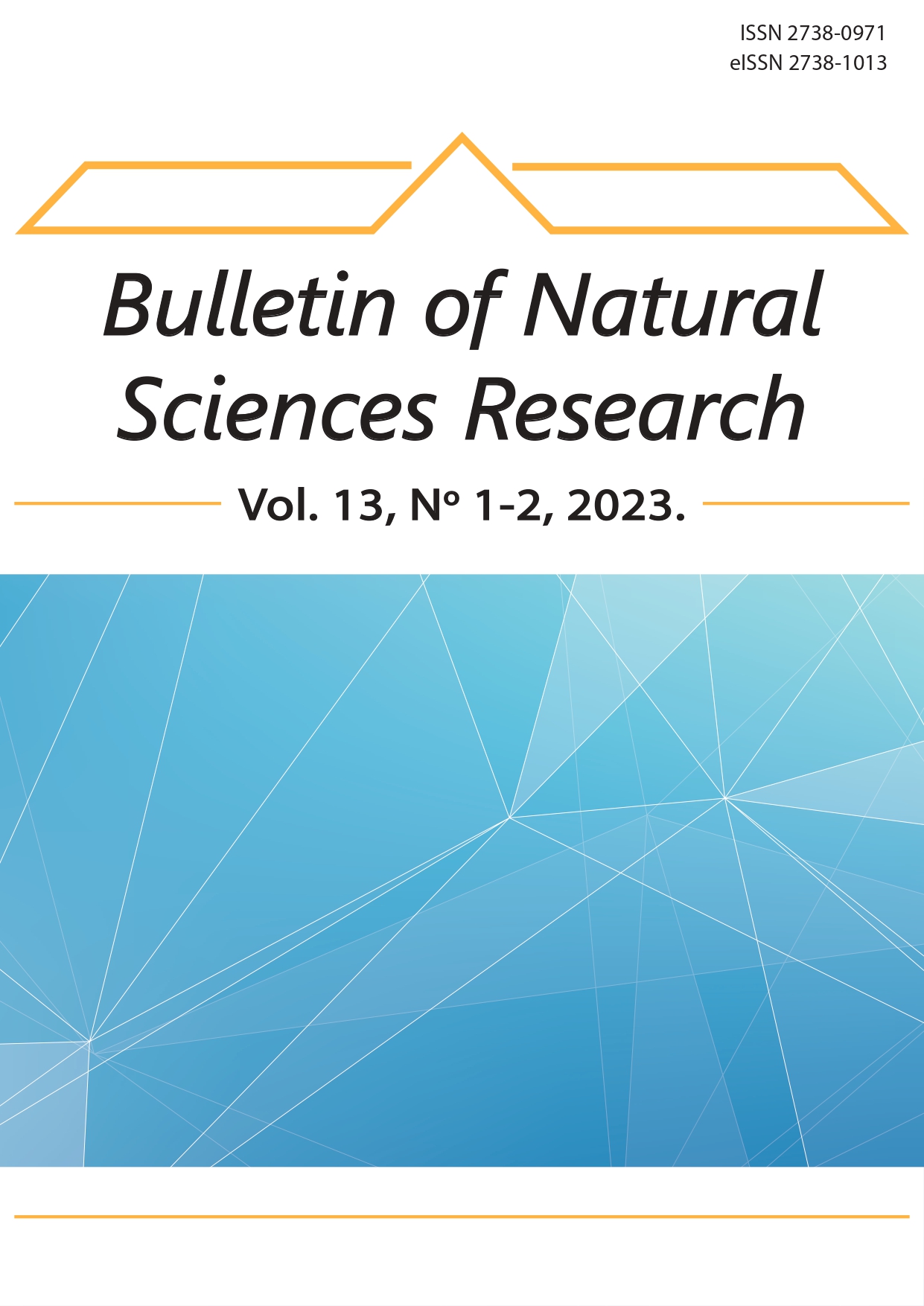DETERMINATION OF POLYPHENOL AND FLAVONOID CONTENT AND ANTIOXIDANT ACTIVITY OF ETHANOLIC, CHLOROFORM AND ETHYL ACETATE EXTRACT OF THE PLANT SPECIES Thymus serpyllum L.
Abstract
This research aimed to examine the phytochemical composition, content of polyphenols and flavonoids, and antioxidant capacity of ethanolic, ethyl acetate, and chloroform extract of the plant species Thymus serpyllum L. The extracts were tested for the presence of alkaloids, tannins, saponins, phenolic compounds, flavonoids, steroids, terpenoids, cardiotonic glycosides, and coumarins. The total content of polyphenols was determined spectrophotometrically with the Folin-Ciocalteu reagent, according to Singleton's method, while the total content of flavonoids was determined using the method with aluminum chloride. The highest contents of polyphenols and flavonoids were determined in ethanolic extracts, where the measured values ranged from 111.00 ± 0.26 to 288.00 ± 0.23 mg GAE/g of dry extract for polyphenols, and 65.80 ± 0.19 to 198.22 ± 0.34 mg RE/g dry extract for flavonoids. The antioxidant activity was determined by the DPPH (2,2-diphenyl-1-picrylhydrazyl) assay. The tested extracts show a good effect on DPPH radical inhibition, with the IC50 values ranging from 35.15 ± 0.33 to 398.27 ± 0.24 μg/ml, and the greatest ability of ethanolic extract to neutralize the DPPH radical. Qualitative phytochemical analysis of the extracts showed a wide spectrum of phytochemicals, where ethanol, as the most polar solvent, extracts almost all tested phytochemicals.
References
Chang, C., Yang, M., Wen, H. & Chern J. 2002. Estimation of total flavonoid content in propolis by two complementary colorimetric methods, J. Food Drug Anal., 10, pp. 178-182. https://doi.org/10.38212/2224-6614.2748
Farasat, M., Khavari-Nejad, R. A., Nabavi, S. M. & Namjooyan, F. 2014. Antioxidant activity, total phenolics and flavonoid contents of some edible green seaweeds from Northern coasts of the Persian Gulf. Iran. J. Pharm. Research., 13(1), pp. 163-170. https://pubmed.ncbi.nlm.nih.gov/24734068
Harborne, J. B. 1973. Methods of plant analysis. In: Phytochemical Methods (Chapman and Hall) London.
Kovačević N. 2003. Basics of pharmacognosy. Belgrade: Institute for Textbooks and Teaching Aids.
Kumar, R. S., Venkateshwar, C., Samuel, G. & Rao, S. G. 2013. Phytochemical screening of some compounds from plant leaf extracts of Holoptelea integrifolia (Planch.) and Celestruse marginata (Grah.) used by Gondu tribes at Adilabad District, Andhra Pradesh, India, Int. j. eng. sci. invention res., 2(8), pp. 65-70.
Mahmoudi, M., Morteza-Semnani, K. & Mojra, E. 2008. Anti-inflammatory and antinociceptive activity of Thymus pubescens extract, Fitoterapia, 79(5), pp. 361-365. https://doi.org/10.1016/j.fitote.2008.04.004
Min, G. & Chun-Zhao, L. 2005. Comparison of techniques for the extraction of flavonoids from cultured cells of Saussurea medusa Maxim., World J. Microb. Biot., 21, pp. 1461-1463.
Mohsen, M. S. & Ammar, S. M. A. 2008. Total phenolic contents and antioxidant activity of corn tassel extracts, Food Chem., 112, pp. 595-598.
Nikolić, M., Glamočlija, J., Ferreira, I. C. F. R., Calhelha, R.C., Fernandes, A., Marković, T., Marković, D., Giweli, A. & Soković, M. 2014. Chemical composition, antimicrobial, antioxidant and antitumor activity of Thymus serpyllum L., Thymus algeriensis Boiss. and Reut and Thymus vulgaris L. essential oils, Industrial Crops and Products, 52, pp. 183-190. https://doi.org/10.1016/j.indcrop.2013.10.006
Parekh, J. & Chands, S. 2008. Phytochemical screening of some plants from Western regions of India, Plant Arch, 8, pp. 657-662.
Sharangi A. B. & Guha S. 2013. Wonders of leafy spices: Medicinal properties ensuring Human Health. Sci.Int.. pp. 312-317.
Singleton, V. L., Orthofer, R. & Lamuela-Raventos, R. M. 1999. Analysis of total phenols and other oxidation substrates and antioxidants by means of Folin-Ciocalteu reagent, Methods Enzymol., 299, pp. 152-178. https://doi.org/10.1016/s0076-6879(99)99017-1
Sofowora, A. 1993. Medicinal Plants and Traditional Medicine in Africa, John Wiley and Sons Limited, 2: pp. 96-106.
Stahl-Biskup, E. & Sáez, F. 2002. Thyme, the Genus Thymus, Taylor and Francis, London, UK, 1st edition.
Stojčevski, K. 2011. Manual for growing medicinal and aromatic plants. Sokobanja: Association "Dr Jovan Tucakov".
Trease, G. E. & Evans, W. C. 2002. Pharmacognosy, 15th Edn. Saunders, pp. 214-393.
Zhou, K. & Yu, L. 2004. Effects of extraction solvent on wheat bran antioxidant activity estimation, LWT, 37, pp. 717-72. https://doi.org/10.1016/j.lwt.2004.02.008
Živanović-Turudija, S. 2015. Organization of production and processing of medicinal aromatic plants in Serbia, University of Belgrade, Faculty of Agriculture.
Authors retain copyright and grant the journal right of first publication with the work simultaneously licensed under a Creative Commons Attribution License that allows others to share the work with an acknowledgement of the work's authorship and initial publication in this journal.

